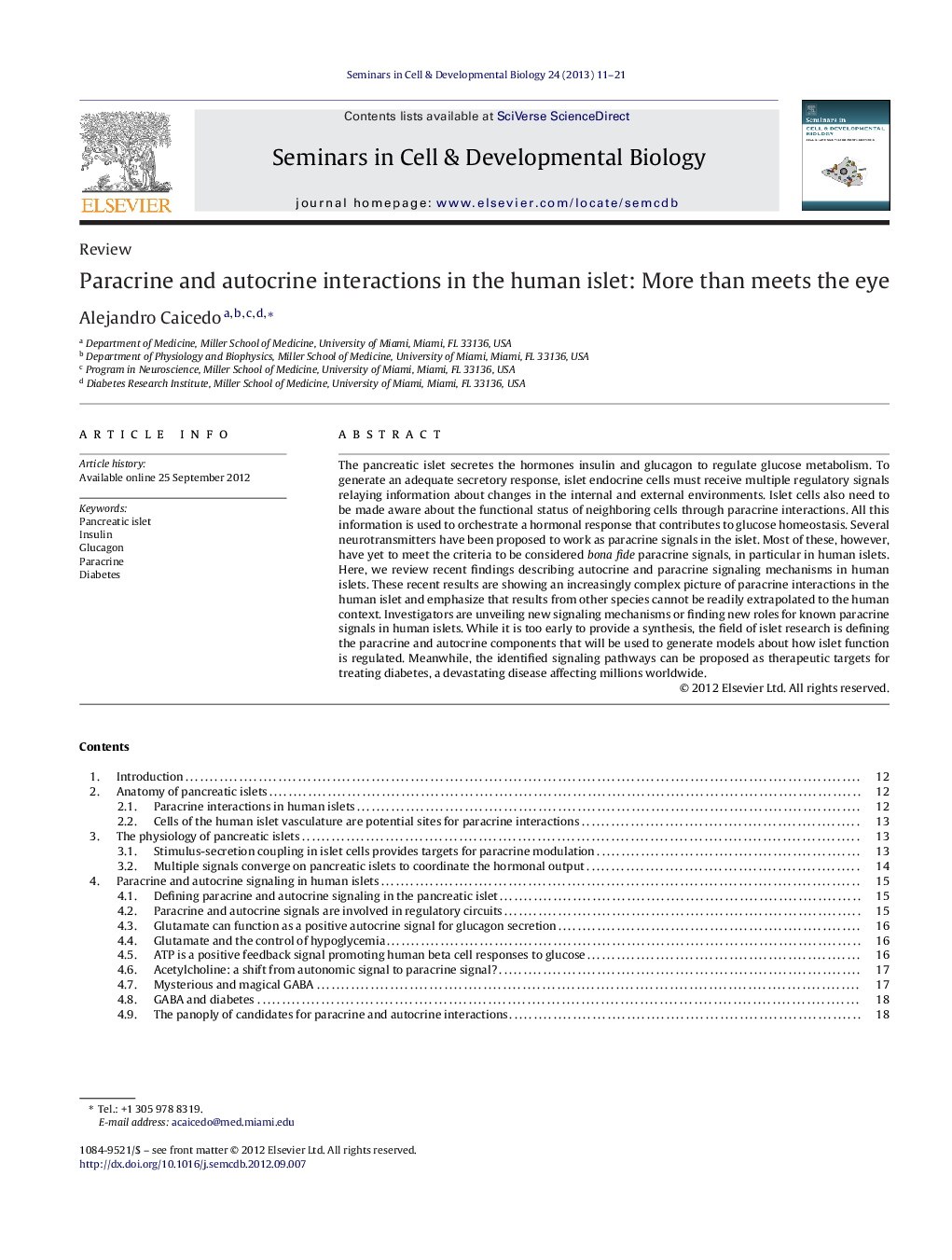| Article ID | Journal | Published Year | Pages | File Type |
|---|---|---|---|---|
| 2202836 | Seminars in Cell & Developmental Biology | 2013 | 11 Pages |
The pancreatic islet secretes the hormones insulin and glucagon to regulate glucose metabolism. To generate an adequate secretory response, islet endocrine cells must receive multiple regulatory signals relaying information about changes in the internal and external environments. Islet cells also need to be made aware about the functional status of neighboring cells through paracrine interactions. All this information is used to orchestrate a hormonal response that contributes to glucose homeostasis. Several neurotransmitters have been proposed to work as paracrine signals in the islet. Most of these, however, have yet to meet the criteria to be considered bona fide paracrine signals, in particular in human islets. Here, we review recent findings describing autocrine and paracrine signaling mechanisms in human islets. These recent results are showing an increasingly complex picture of paracrine interactions in the human islet and emphasize that results from other species cannot be readily extrapolated to the human context. Investigators are unveiling new signaling mechanisms or finding new roles for known paracrine signals in human islets. While it is too early to provide a synthesis, the field of islet research is defining the paracrine and autocrine components that will be used to generate models about how islet function is regulated. Meanwhile, the identified signaling pathways can be proposed as therapeutic targets for treating diabetes, a devastating disease affecting millions worldwide.
Graphical abstractFigure optionsDownload full-size imageDownload as PowerPoint slideHighlights► The cellular arrangement predisposes human islets for paracrine interactions. ► Paracrine and autocrine signaling in human islets is complex. ► Results from other species cannot be readily extrapolated to the human context. ► Human islets have paracrine signaling mechanisms not described before. ► Known paracrine signals have new roles in human islets.
